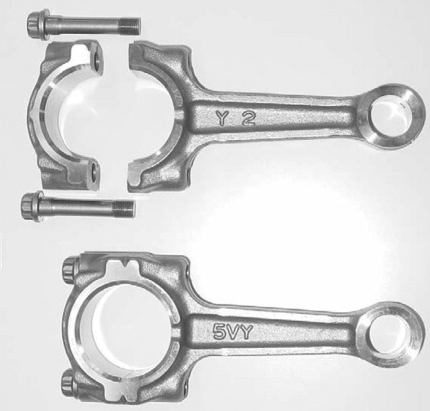Polishing connecting rods is a process that not only adds to the aesthetic appeal but also significantly improves the engine’s performance by reducing friction and heat. This detailed guide will explain the benefits, methods, and necessary precautions to take when polishing connecting rods.
The Impact of Polishing Connecting Rods
The connecting rod plays a vital role in the engine’s operation, connecting the piston to the crankshaft and transmitting the force from the piston to the crankshaft. Over time, connecting rods can develop surface imperfections, leading to increased friction, heat, and decreased engine performance. Polishing the rods minimizes these surface imperfections, reducing friction and heat, and improving overall engine performance.
Tools Required for Polishing Connecting Rods
The polishing process requires specific tools to ensure an even, smooth finish. These tools usually include a polishing machine or a drill with a polishing attachment, polishing compound, and microfiber cloths.
Process of Polishing Connecting Rods
Cleaning the Connecting Rod
Before polishing, it’s necessary to clean the connecting rod thoroughly to remove any dirt, grime, or debris. This process ensures a smooth, even surface for polishing.

Applying the Polishing Compound
Apply a small amount of polishing compound to the rod. Ensure that the compound is spread evenly over the surface to achieve a consistent finish.
Polishing the Connecting Rod
Use a polishing machine or a drill with a polishing attachment to polish the rod. Maintain a steady, even pressure and move the tool consistently across the surface of the rod to ensure a smooth, even finish.
Cleaning After Polishing
Once the polishing process is complete, it’s essential to clean the rod again to remove any residual polishing compound. A clean, microfiber cloth is ideal for this step.
Considerations When Polishing Connecting Rods
While polishing connecting rods can improve performance, it’s important to approach this process with care. Polishing should be done evenly across the entire rod, ensuring that no areas are excessively polished or left untreated. Improper polishing can lead to uneven surfaces, potentially causing more friction and heat.
The Art of Maintaining a High-Performing Engine
Polishing connecting rods forms part of the comprehensive maintenance plan that keeps an engine operating at peak performance. As such, it demonstrates the meticulous attention to detail required when caring for an engine. A well-polished connecting rod not only contributes to the overall aesthetics of the engine but also significantly enhances its performance. Whether you’re an engine mechanic, car enthusiast, or a hands-on car owner, understanding how to polish connecting rods effectively is a crucial skill to have in your automotive repertoire.